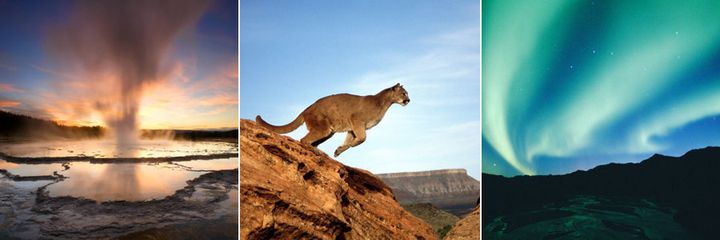
As I pack my bags for a rafting trip through Idaho's wilderness, I am reminded of the benefits that all of us enjoy thanks to the Wilderness Act, which celebrates another birthday this month.
Sept. 3 marked the 46th anniversary of the day President Lyndon B. Johnson signed the Wilderness Act into law in 1964. The act created the National Wilderness Preservation System and immediately protected 9.1 million acres of special public lands by making them part of this system.
Since that day, this visionary legislation has led to the protection of nearly 110 million acres of spectacular U.S. lands, and I'm proud to say that The Wilderness Society has been active in just about every major addition.
Because of the Wilderness Act, magnificent places like the John Muir Wilderness in California, the Bob Marshall Wilderness in Montana, and the Frank Church-River of No Return Wilderness (where I'll be rafting) remain as wild as they were hundreds of years ago. These special lands are free of parking lots and industrial infrastructure, with nature still in control.
While most public lands remain open to development, the Wilderness System continues to ensure that a small portion of our public lands -- 2.5 percent of lands in the lower 48 states -- remain wild.
These protections are critical to wildlife and the health of ecosystems that benefit humans. For example, they filter water for downstream communities, clean our air, store greenhouse gases, and provide outdoor laboratories for the discovery of tomorrow's medicines.
Of course, wilderness may be best known for the peace and quiet it offers in an age when those commodities are in short supply. Wilderness provides the kind of recreation experience that is increasingly rare, threatened, and valuable. Wilderness areas offer some of the best and most pristine opportunities for hunting, fishing, camping, swimming, hiking -- and taking thrilling rides down rebellious rivers. They also provide the unique and fast-disappearing experience of interacting with the wild outdoors -- including the risks that come with it -- without the interference of the modern world.
The National Wilderness Preservation System also enables us to travel back in time. When I'm rafting the Middle Fork Salmon River, I will be looking at a landscape that is little changed from 1776 or even 776.
The freedom and responsibility of being out in truly wild frontier is a fundamental part of our cultural legacy as Americans. Our wilderness areas play a vital role in keeping that legacy alive.
This anniversary month, which President Obama has just proclaimed National Wilderness Month, also coincides with a time of great opportunity for wild places. Not only is the Obama administration wrapping up a sweeping public listening campaign to let Americans shape the nation's conservation agenda, but there are numerous wilderness bills being considered by Congress.
These measures would protect stunning places in Colorado, Oregon, New Mexico, Idaho, California, West Virginia, Tennessee and elsewhere. The Wilderness Society is also urging Congress to protect parts of the Arctic National Wildlife Refuge as wilderness. As President Theodore Roosevelt put it: "The nation behaves well if it treats the natural resources as assets which it must turn over to the next generation increased, and not impaired, in value."
This piece originally appeared on The Wilderness Society's blog